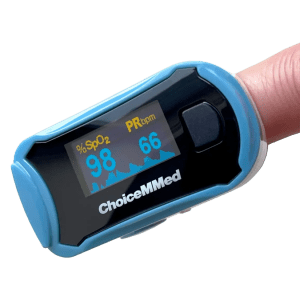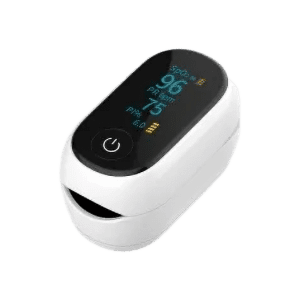In an era where health monitoring has become a pivotal part of our daily lives, understanding the tools at our disposal is key to managing our well-being effectively. A pulse oximeter, a small but powerful device, plays a crucial role in this arsenal, offering critical insights into our respiratory health. But when exactly should one use a pulse oximeter? Let’s dive into the details.
What is a Pulse Oximeter?
A pulse oximeter is a non-invasive device designed to measure the oxygen saturation level (SpO2) in your blood and your pulse rate. Oxygen saturation indicates the percentage of hemoglobin in your red blood cells that are saturated with oxygen, which is essential for the cells in your body to produce energy.
How Does It Work?
The device works by passing beams of light through the blood in your finger, earlobe, or toe to measure oxygen levels. It does this by comparing the amount of light absorbed by oxygenated and deoxygenated blood. This technology allows for quick readings without the need for a blood sample, making it an invaluable tool for both medical professionals and individuals looking to monitor their health at home.
When to Use a Pulse Oximeter
1. Monitoring Respiratory Conditions: Individuals with conditions such as asthma, COPD (Chronic Obstructive Pulmonary Disease), and other respiratory disorders can use a pulse oximeter to monitor their oxygen levels. This is crucial, especially if symptoms worsen or during an asthma attack, to determine if supplemental oxygen is needed.
2. Tracking Health After a Medical Procedure: After surgeries, especially those involving anesthesia, pulse oximeters are used to monitor patients’ oxygen levels as they recover. This helps ensure that oxygen levels remain within a safe range during the recovery period.
3. During or After Exercise: Athletes and fitness enthusiasts can use pulse oximeters to monitor their oxygen saturation levels during or after intense physical activities. This data can help assess how well their body is adapting to exercise and recovery.
4. COVID-19 Monitoring: In the context of the COVID-19 pandemic, pulse oximeters have become a tool for people to monitor their oxygen levels, especially if they have been diagnosed with the virus. COVID-19 can lead to pneumonia and other respiratory complications that affect oxygen saturation, making monitoring crucial.
5. For Individuals with Sleep Apnea: People suffering from sleep apnea, a disorder that causes breathing to repeatedly stop and start during sleep, can use a pulse oximeter to monitor their oxygen levels overnight. This can help assess the severity of their condition and the effectiveness of treatment options.
Conclusion
Pulse oximeters provide a simple, yet effective way to monitor vital health indicators, offering peace of mind and crucial data that can guide health decisions. Whether you’re managing a chronic respiratory condition, recovering from surgery, an athlete monitoring your fitness levels, concerned about COVID-19, or dealing with sleep apnea, a pulse oximeter can be an invaluable tool in your health monitoring toolkit.
Explore our range of high-quality pulse oximeters designed for home use and find the perfect device to meet your health monitoring needs:
- Home Pulse Oximeter Collection
- Choicemmed Finger Pulse Oximeter

- Fingertip Pulse Oximeter Portable SpO2 Machine OLED Screen

With a range of options tailored to your needs, NZMDL is committed to providing you with the tools necessary to take charge of your health.
